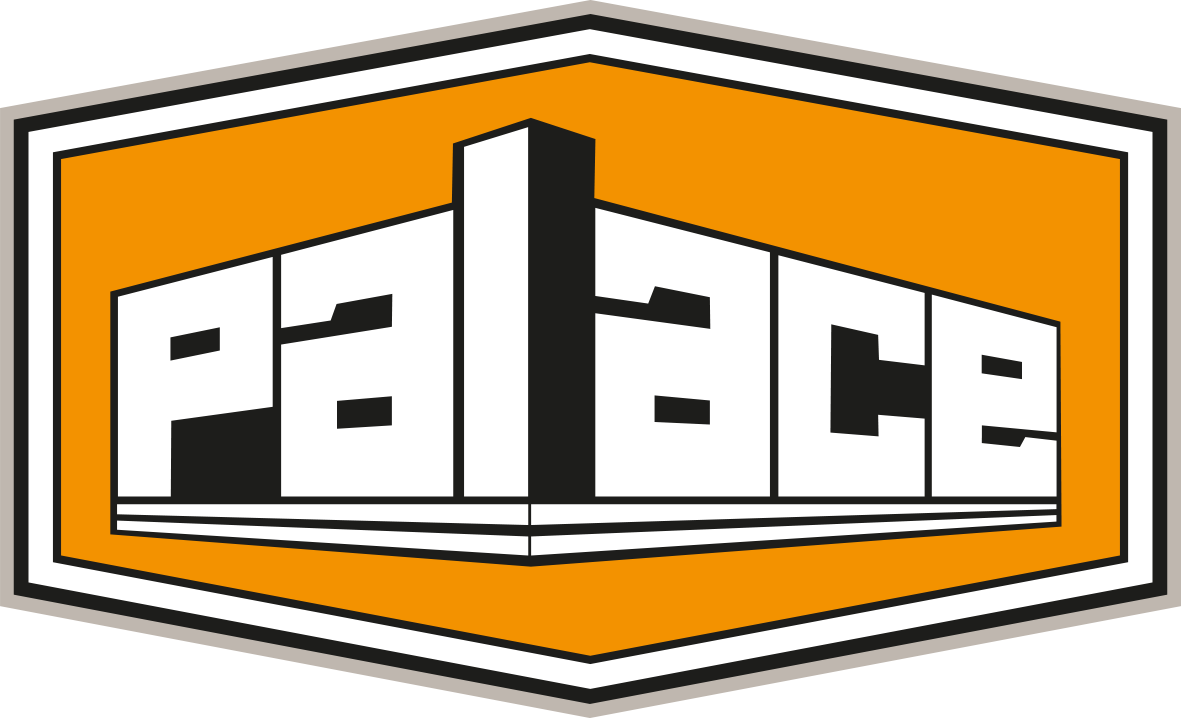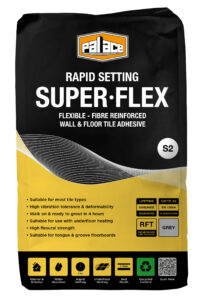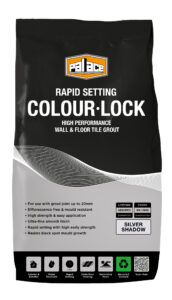INTRODUCTION
Fixing tiles to anhydrite or gypsum-based surfaces requires checks and additional preparation measures to be undertaken to avoid the adverse reaction which can often occur between cement-based adhesive mortars and this type of substrate, which invariably results in lifting and failure of the bond if the following action is not undertaken.
DESCRIPTION & IDENTIFICATION
Anhydrite screeds are also referred to as calcium sulphate or gypsum-based screeds and are a mix of fine and coarse aggregates with a calcium sulphate (gypsum) binder and therefore look similar to a cement-sand screed. Often, a light colour, almost white, will indicate that the screed is likely to be calcium sulphate based. Other descriptions to identify the screed as anhydrite-based can be made by referring to the flooring contractors’ supplier or manufacturer, where names such as Lafarge GYVLON or Tarmac TRUFLO identify a commonly used source of this type of underlayment. Anhydrite screeds are not suitable as a wearing surface or for external/internal locations where they can become damp, frequently wet or reside in saturated areas. The low shrinkage properties of this system make it a preferred choice for deep-bed floor-levelling specifications where the thickness of an anhydrite screed can be typically in the range of 25mm to 80mm; ideal for embedded sub-floor heating systems.
SURFACE PREPARATION
Before considering fixing tiles to an anhydrite screed, there are several essential preparatory steps to consider: The removal of a loose friable layer of surface laitance must be carried out usually 4-6 days after application using appropriate equipment. This will also assist the drying of the screed. Screed drying time is approximately 1mm/day up to 40 mm thickness under ambient temperatures and drying conditions. This will increase for screeds thicker than 40 mm deep and in poor drying conditions. To ensure optimum surface conditions, it is essential that good drying conditions are provided from the day the screed is laid. When first laid, the screed should be protected from conditions likely to cause very rapid drying and also atmospheric humidity must be low, i.e. not greater than 65% RH, and the air temperature must be adequate (e.g. 20°C). Good ventilation or the use of dehumidifiers can assist in lowering humidity.
TESTING FOR RESIDUAL MOISTURE LEVEL
Before ceramic floor tiles are laid, the moisture content of the screed should be checked to ensure that it is adequately dry and there are two commonly adopted tests to do this: The British Standard BS8203-1:2001 method for measuring the moisture condition of a screed is to use an electronic meter or hair hygrometer. This non-destructive test method gives a figure which should equate to approximately 75% relative humidity (the required limit for floor finishes). For reliable results, the BS8203 method must be strictly adhered to, including the use of a correctly sized and insulated box sealed to the floor, be given sufficient duration (typically 48-72 hours) and be protected by an impervious sheet around the instrument.
Alternatively, a carbide moisture meter test can be used whereby required values will need to be equivalent to 0.5% water by weight for moisture sensitive floor coverings (e.g. ceramics and adhesives). This figure equates approximately to 75% relative humidity. A typical example is for a screed thickness of 30mm with an ambient temperature of 20°C and with good ventilation that should reach a moisture content of 0.5% in approximately 30 days. Electronic meters may be useful in determining where wetter and drier areas of screed are located, but either one of the above methods should be used to determine whether a screed is actually dry enough to receive the flooring.
CHECKING SURFACE REGULARITY & SOUNDNESS
The maximum permissible departure from a 2m straight edge resting in contact with the floor should be no more than 3mm. Checks should also be made to ensure that movement joints have been installed in the screed at intervals and positions commensurate with the scale of the installation and also any coincidental joints below the screed. In anhydrite floors where sub-floor heating is to be activated, the width and spacing of movement joints should be sufficient to accommodate the anticipated thermal movement of the screed between the maximum operating temperature and the expected lowest temperature of the screed.
Before any tile fixing can begin, in addition to ensuring moisture content has been tested and verified to comply with the above conditions, the surface of the screed must have been correctly prepared to ensure removal of all laitance and loosely bound particles. Laitance is the loose or weakly cohesive fines present on the surface of a screed and should always be swept and vacuumed by the tiling contractor to remove all dust and friable material such that the surface to be tiled is then clean, dry and sound.
PRIMING AND SEALING
To ensure maximum adhesion, and to avoid an adverse chemical reaction such as expansive ettringite formation between the sulfate in the screed and cement-based adhesives, the screed must be primed with a coating compatible with the tile adhesive and two coats of neat TILERS PRIMER which will provide complete & effective coverage, be absorbed into the calcium sulphate screed and prevent chemical interaction with the cement-based adhesive.
N.B. When fixing tiles to a gypsum wall plaster, the same preparation, priming & sealing procedure will be required.
TILE FIXING
The recommended adhesive for tiling over primed calcium sulphate screeds is a polymer modified cementitious adhesive having a C2 or C2F classification and the selection will depend on several factors, including, the type of tiles being fixed or If the screed is unheated or heated. Palace Trade-Flex, Multi-Flex or Easi-Flex adhesives are all recommended for fixing over a prepared anhydrite screed and the use of a pourable thick bed adhesive with built-in polymer such as Palace Flexi-Set Thick Bed will be advantageous when fixing large format (600mm x 600mm) floor tiles.



